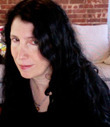Caroline Leavitt's Blog, page 109
July 25, 2012
Amazing Grace: I made the first round of Sundance!
I am awed, blissed, frantic, that I actually and unbelievably made the first round for Sundance Screenwriting Lab! My script is based on my upcoming novel IS IT TOMORROW, set in the paranoia of the 1950s, and I have two weeks to polish the complete script. If I make the next cut, I get to go to Sundance for five days and work with experts to make the script a real movie--and they give support for the project when I leave, too.
If anyone knows any spells, now is the time to let me know![image error]
If anyone knows any spells, now is the time to let me know![image error]
Published on July 25, 2012 05:51
July 24, 2012
Elissa Schappell talks about the paperback of Blueprints for Building Better Girls, not sleeping well, and so much more
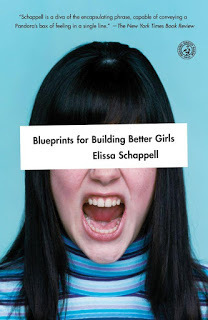
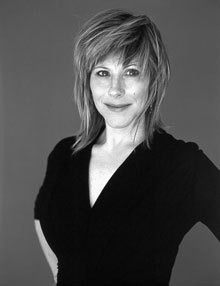
Elissa Schappell is a powerhouse, an amazing writer, and also very, very funny. She's Vanity Fair's Hot Type book page editor, a senior editor at The Paris Review, she co-founded Tin House where she is now editor-at-large, and her amazing debut, Use Me was a finalist for the PEN/Hemingway Award. I raved about Blueprints for Building Better Girls in the Boston Globe, and it's now available in paperback. Buy it now. Trust me. You need this book. I'm so jazzed and honored to have Elissa here on my blog Thank you, Elissa!
So, do you think there are, or should be, blueprints for building better girls--or boys?
Society has always proffered, nay, dictated, rules of conduct, since the first time a cavewoman was grabbed by the hair in front of the neighbors and questioned, Do I make a fuss, or not make a fuss? Should I invite them back to the cave to share our mammoth shank?
I do think good manners are important. In that regard I take Emily Post’s point of view that, “Manners are a sensitive awareness of the feelings of others. If you have that awareness, you have good manners, no matter which fork you use.”
You may damn the forks, but you should, no must, say Please and Thank you, and Pardon me, and Please take my seat, and It’s fine I wasn’t using my left foot anyway. Rarely have I regretted not being polite in a social situation. There are, of course, certain situations where rudeness is not only acceptable it’s demanded.
As to the blueprints for women, I’d start with: Don’t Give Away Your Power, and If You Wait for Someone to Give You Permission to Be Yourself You’ll End Up A Nobody.
There’s a whole list for men too, but I’ll start with: Don’t Tell Girls It’s Cute When They Get Mad, and Don’t Rape People
I loved and deeply admired the structure of the book, linked short stories, where the same characters would sometimes re-pop up.
I’m so glad. I love this structure too. Only recently have I come to terms with the fact that at my core I’m trans. A proud trans-structural writer. People always ask when I’m going to write a novel—like, When are you going to grow up and get serious? Get a real job. As though the pinnacle of achievement is the traditional novel. Preferably one of those two-hander, he-man-sized doorstops.
I’m mad for linked-story collections as a reader because they deliver the pleasure of a story—a contained world with beginning middle and end—with the gift of the novel, a unified landscape of characters and storylines joined in a larger web of meaning.
The form speaks to the way I think—which is far from linear. As well as my abiding desire to capture those transformative experiences in our lives, big or small that make us the individuals we are.
Having the characters appear in each other’s stories whether directly or indirectly was appealing to me because that’s the way life is when you socialize within the same social strata, there’s overlap. We exist on the peripheries of each other’s stories without even being aware of it. Sometimes we are characters in other’s people’s minds or memories, and sometimes we simply occupy the same space.
I wanted to highlight the ways women judge each other on the basis of looks, a pre-conceived notion of who they are, or what we’ve heard about them. In truth we have no idea what we might have in common with someone else, or how other people suffer.
One of the nice things about having the women pop up in each other’s stories is that reader knows them in a way the other characters don’t. We know their secrets, while the other players in the story don’t. (I love this as a reader) That intimacy between reader and character bonds them the way people who know each other’s secrets are bonded.
Plus, by getting to see the characters through a different lens, from another angle, at a different time in their lives challenges the reader to consider the judgments they made about them, and confront their own biases and prejudices.
I began to see that this was what I was doing in all the stories, exploring the lives of women that we all think we know and judge. Telling the truth about their lives. Who they really are, the thing they don’t want you to know, but have to tell you. The experiences we all share, but don’t like to talk about. This was how the stories were linked. I began to see that there were already characters—although they had different names—that were each other’s dopplegangers. I looked at the stories with an eye to, What is the story this character needs me to tell? What can’t she tell you?
The persona Belinda/Bender projects, empowers her, as much as it demeans her. It protects her as much as it opens her up for pain. She likes being seen as the wild child. Feeling desired and in her mind admired for her antics gives her power. Any flashes of seriousness or intense introspection she tamps down. She’s a very vulnerable character and she doesn’t want to be.
She was the key to the whole book. Some of these stories started with a feeling I had, or an opinion, like “Monsters of The Deep”—I’ve always been interested in the myth of the slut. “The Joy of Cooking”—we only ever hear that story from the point-of-view of the sick daughter and it’s always sympathetic to her. The mother is always this hideous gorgon whose has ruined her child, and that’s simply not true. The character of Charlotte is what drew me in to “Are You Comfortable?”. I hesitate to say this because it sounds so cliché, but I heard Bender’s voice in my head. Insistent. She kept saying, “Why don’t you write about me? What’s wrong with me? Write about me.” And I kept responding, “No I don’t want to write about you. This is a serious book and you are a ridiculous person.” After about the tenth time I thought, “Wait, what am I doing? What’s with the scolding tone? How dare I judge her. I was treating her the same way everyone else treated her. I didn’t see her as anything other than a joke, and that wasn’t fair. If she was so slight why did I keep hearing her voice? And I thought, I have to tell her story.
Your brilliant novel Use Me, was also linked stories, but it seemed more to focus on just one character, so I wanted to ask, were there any problems or surprises in doing linked stories? Did you end up preferring one form to another?
I hadn’t intended to write linked stories. I loved Alice Munro’s “The Beggar Maid” and Elizabeth Tallent’s “Time With Children” I fairly worship Grace Paley’s work and the recurring character of Faith, although her stories aren’t linked in a chronological narrative. Still, I hadn’t considered it--obviously this was pre-Elizabeth Strout’s Olive Kitteridge and Jenny Egan’s Goon Squad--I was just doing what I always have done which is write the stories that I wanted to, needed to write.
It wasn’t until my agent pointed out despite having different names my main character was always the same person (I thought by changing the names perhaps no one would notice) and when you laid all the pieces out—it was In Use Me I wanted to tell the story of how one young woman’s sense of identity was shaped by the love and loss of her father and on a larger scale how a woman’s sense of power, her sexuality and ability to form intimate attachments with men, are related to their relationships with their fathers. What was surprising to me was that as I was writing that book, which is episodic in nature again like postcards or photos capturing the pivotal moments in Evie’s coming of age—I kept hearing another voice, a Catholic school girl who was in love with her abortionist. This young woman, Mary Beth would become the other point of character in the book. (The only other time this voice insisting on a story has happened to this same degree was in Blueprints when I started hearing the voice of Bender.) Unlike Evie, Mary Beth, in the absence of a good father has a very different power dynamic with men.
In terms of Blueprints for Building Better Girls I wanted to write about a range of universal female experiences and female archetypes, subverting the reader’s expectations and pre-conceived notions of who these women are. The cast of stereotypes: the good mother, the bad mother, the slut, the party girl, the good girl, the bad girl, the good wife, the artist. The structure can be seen as a sort of etiquette or anti-etiquette book as the stories all address the way our cultural mores influence women—what is valued, what is considered appropriate behavior, what is attractive—and how these messages inform our sense of self. Each story is a reflection or response to the image we have of these female stereotypes
Belinda, one of the characters, says, ““Everybody forgets who they used to be, and they become better people, even though inside they’re exactly the same.” Do you think there is ever really a possibility of change on a deeper level? (I’m afraid of the answer).
I do think there is the possibility of change on a deep level, if one wants it bad enough. No, you can’t change where you come from or what you’ve done, but you can change how you choose to look at it. You can grow out of that. At the risk of sounding like a goof ball, your past is the seed, you are the flower. That said, on some cellular level I am very much the girl I was at thirteen—in fact I am more like her now than I was twenty years ago. I am passionate and I want to change the world, I think I can, in some way change the world.
You are taking the pulse of modern America, from discontented moms on the playground to women who are struggling to become moms (discontented or not) to young women with eating disorders, in a wickedly funny way. Do you find yourselves always watching people and situations?
Always. Like all writers I am continually registering information. Having a writer in the family is like having an assassin at the breakfast table. It’s no different with friends and acquaintances, which may explain why—after the last book—I’m not getting invited to as many parties. While I am writing about experiences that are not necessarily my own, I hope that I am doing so in a way that feels truthful and empathetic. No matter how unlike me a character is, I hope I never write about them in a way that suggests they’re a stranger to me.
You’re also the co-founder of Tin House, the ravishingly great literary magazine, and you write the Hot Type column at Vanity Fair. So, when do you sleep?
I don’t sleep. Or not often, and when I do—whine, whine--it’s poorly. That’s something I have to learn how to do. Seriously.
Actually, the question is what’s your daily writing life like?
My whole life I’ve struggled with organization (perhaps that’s clear from my answers here?) were I not to organize my writing life I would spin out of orbit and do nothing but careen through the universe, shooting out sparks and clouds of dust. Which I did for years. What works for me is to break down my week thusly—Monday’s I scheduled appointments, lunch dates, shop for food and sundries, what have you. If I’m on deadline, I’ll write once this is accomplished. Tuesdays are wholly dedicated to teaching, again if on deadline, I’ll work at night. Wednesday through Friday, I’m in the studio writing. Mornings are dedicated to fiction—I have to start as early as possible to beat my super-critical ego out of bed, and lock the door. In the afternoon I work on non-fiction. Saturdays and Sundays I try not to work unless I’m on a roll or absolutely have to. You know as a writer you can work all the time, you can convince yourself that you must. (I have a dread fear of being thought lazy.) However, what I found was that when I went into the weekend thinking I was going to get to write, I was resentful when I couldn’t find the time because I was with the kids or doing something else around the house. And when I was writing on a Sunday I felt guilty for not hanging out with my kids. I longed to be with them but thought, No you can’t. You have to work. This way everyone wins. As they’ve gotten older and have their own plans and lives on the weekends it’s easier for me to work, should I really desire it, or have to.
I do also want to ask, since I’m also a book critic, how you feel reviewing books has impacted your own work.
It’s made me a harsher critic of my own work. I can be rather thinned skin--imagining a writer/critic reading my work as critically as I read theirs--makes me reluctant to publish anything before I’m certain it’s perfect. I’m not about to publish a book—which is really the equivalent of sending poorly lit naked pictures of yourself cleaning the tub--into the world, until I’ve fixed every flaw I can see.
On the flip side I hope that being an author has made me a better critic. I know how hard it is to write a book, so I go in rooting for the writer to win. It’s why I never review anyone’s work I don’t care for.
(Personally, I find being able to figure out what works and why and what doesn’t and how it could be fixed, really helps me in my own work. Is that the case for you?)
Absolutely. I find reading other writer’s incredibly instructive and inspiring. And yes, I can always see how someone else might improve their piece, but rarely can I see the flaws in my own. Oh that stories were tires you could just immerse in water, and follow the bubbles to find the holes.
What’s obsessing you now, and why?
As you know if you ever go to my FaceBook page or read “The Weeklings” online, I’m fairly obsessed with the war being waged against women by the GOP. Once I’d have written, “radical Conservative right wing of the GOP” but they are in the majority now, and while they’re radical—in terms of extremism, they aren’t radical in relation to the majority views of the Republican party. I’m also obsessed as it were with the rising acceptance of rape-culture, this idea that rape really isn’t that big of a deal. This despite the fact that 1 in 4 college girls, and 1 in 6 women will be the victim of rape of attempted rape. The majority of these women ages 12-34, will be assaulted by someone they know. The victim shaming and blaming is something that angers me greatly.So, yes, that, that has me a bit obsessed.
What question should I be mortified that I forgot to ask?Darling, I think you’ve covered it all.
Published on July 24, 2012 15:47
Beth Kephart talks about Small Damages, Spain, and so much more
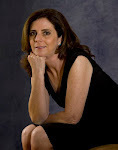
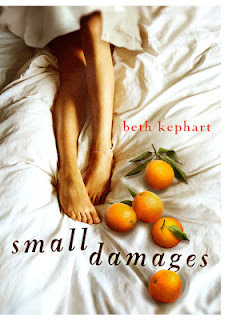
I don't remember when I first met Beth Kephart, but what I do remember is the immediate warmth I felt. This is a woman you'd want to live next door to because you know she'd always be there for you with a plate of pie and a cup of tea and conversation. She's not just a wonderful writer, she also has a heart the size of Jupiter and I'm honored to consider her my friend. I wanted to celebrate the publication of her extraordinary new novel, Small Damages, and I'm jazzed to have her here on my blog. A million hugs, Beth, and a thank-you! For the blog and for everything.
You are now the diamond in the sky. A rave NYT review, praise everywhere, and rightfully so, for a novel that is as luminously moving as it is smart. You and I have talked about the struggle to be published well, to find the right home with a publisher, to feel appreciated, and the absolute joy when that happens. So tell us about it, the struggle and the joy. Did you know when you were writing this novel that it was somehow different in some way, and that you were going to shine?
You and I have talked, first of all, because you are such an incredibly generous and open writer who yields so much to others. So that first.
Second, Small Damages is my fourteenth book. It arrives after five memoirs (in which life’s big questions were examined, as opposed to Epic Personal Tragedies), an uncategorizable foray into poetry and history, a twisted corporate America fairytale (which became corporate Everywhere fairytale after a dozen translations), and several young adult novels that have primarily been read by adults. In short, I have not been an easy writer to peg, my work hasn’t always been easy to shelf, and I fear I’ve been more of a conundrum than anything else. I have not made for easy publishing fodder.
Through all these years I have been working on Small Damages, a book inspired by my travels to Spain, where my brother-in-law lived for a long time. Place is story to me. Seville and its rural outposts was a world I could not leave in my imagination. I read, I thought, I dug deep into history, I took photographs, I interviewed people, and I wrote eighty drafts of a novel that kept changing its foreground, but never its background. A few times this book seemed close to finding a publishing home, but then things would ebb away. It found the home it did find because Philomel’s Jill Santopolo, with whom I had worked at Harper, had slipped a copy of Ruta Sepetys’ Between Shades of Gray to me at the ALA a few years ago (the same ALA when I read Pictures of You in my hotel room!); the book had been acquired and edited by Jill’s Philomel colleague Tamra Tuller. “This book made me cry,” she said, “and I think it will move you, too.”
Well, I thanked her, put the book in a safe place, turned to talk to someone else, and when I looked back the book was gone. Jill kindly sent me another copy, and I read at once. Here was a smart book, a literary book, an important book, an unusual book. I was in love, sight unseen, with anyone who would acquire a book like that. I sent Tamra an email with Small Damages attached. The rest, as they say, is history.
Philomel is exquisite. At Philomel I have a home. There I have never felt like a fringe writer, a secondary writer, a marginal, will-she-please-fit-a-category, we’ll-get-to-you-when-we-get-to-you writer. Michael Green, Philomel’s president, is a most generous person, and correspondent. Tamra—beautiful, intelligent, thoughtful, embracing—approached the editing of this book, the design of its cover, and the preparation of it for the world with the greatest care, and in the process we became great friends. Jessica Shoffel, a wildly wonderful and innovative publicist, wrote me a note I’ll never forget after she read the book and her devotion to getting the word out has been unflagging, sensational. The sales team got in touch a long time ago and has stayed in touch. And on and on.
But no, I never knew I would shine. I don’t think of myself as a diamond or a star. I never think in those terms. I just keep writing my heart out. And when you are collaborating with a house like Philomel, when you are given room, when your questions are answered, when you are given a chance, there are possibilities.
What I loved so much about Small Damages was how unexpected it was. Kenzie weighs the future with her baby not in America, but in Spain, where she is a cook's assistant. Where did that idea spark? What was the research like?
I have the privilege of knowing some incredibly wonderful young women who found themselves pregnant at a very early or uncertain time in their lives. They have raised exceptional children. They have had to persevere with great courage. I always knew there’d be a cook, there would be gypsies, there would be heat and bulls. Kenzie entered this story late. I fell in love with her. I fell in love with writing, again, about maternal love.
What's your writing life like now?
For the first time in probably twenty years I am not writing. I just completed three books, and they will appear over the next eighteen months—a book for another fantastic Penguin imprint (Gotham) called Handling the Truth (about the making and consequences of memoir, the subject I teach at the University of Pennsylvania), a boy-centric YA historical novel for Philadelphians called Dr. Radway’s Sarsaparilla Resolvent (featuring Eastern State Penitentiary, Baldwin Locomotive Works, and my favorite 19th century city characters), and another novel for Tamra, which takes place in 1983 Berlin. I need to dream, to stand, to walk, to see, to not hurry toward anything new.
What's obsessing you now and why?
Living well, living quietly, teaching, my family, the garden, the rain that does and does not fall, the 100 books that sit in stacks to be read, and of course the corporate work, which is part of every day, the tock in the clock of my existence.
What question didn't I ask that I should have?
My goodness, if you asked me anything more, can you imagine how long this would be!!?? I’m just grateful to be here, Caroline, and grateful for you.
Published on July 24, 2012 08:51
Nora Zelevansky talks about Semi-Charmed Life, shoulds vs. want, and much more
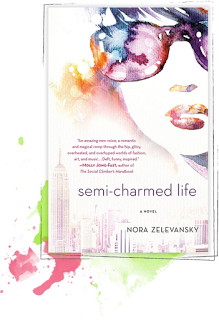
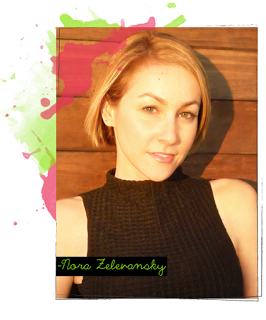
Nora Zelevansky is both novelist, journalist, essayist and editor, and the author of the very sparkling Semi-Charmed Life. We both had a conversation about writing in the wonderful Dame magazine, and I couldn't wait to ask Nora to come on the blog. Thanks, thanks, thanks, Nora!
I loved the title. Can you talk about what it means to have a semi-charmed life?
It's funny. This wasn't the original title and we really struggled with finding the right one, which would allude to an otherworldly quality and a seemingly glamorous lifestyle (at least when viewed from the outside), but also the main character Beatrice's tendency toward poor decision making, clumsiness and her self doubt. It's hard to find one title that fits all of that!
Beatrice comes from a "charmed" background and she falls into yet another "charmed" situation when she meets the famous Veruca Pfeffernoose, but there's a darker, more complicated to side to being inside those worlds too. And sometimes all that charm seems like more trouble than it's worth. So, she's sort of half-charmed, which is what the title is meant to imply. (Also, it's the name of a 90's pop song, which is sort of funny and kitschy.)
You grew up on the Upper West Side and one of the pleasures of the books is the New York City attitude, that nothing exists outside of Manhattan, that whole "why would you go anywhere else?" attitude. Yet, the book is both a Valentine to the city and a satire about how limiting such an idea--that NYC is the best--can be. (Though frankly, I sort of feel that way myself!) How do you personally feel about this, and how much of Beatrice is or was you? (There's such a great insider feel to the novel!)
People who know my background will think that the book is largely based on my life. That's sort of true, but mostly it's not. The setting and the environment (the Upper West Side, an art world family, the dramatic older sister etc.) do mirror my upbringing. My mother is a museum director and my father is an artist, but they travel constantly all over the world. And, as opposed to Beatrice's parents, who insisted on keeping her close, they insisted that I leave New York City for college. That was their only guideline. They felt that it was important to broaden my horizons and meet different types of people. I went to California, which was farther than the rest of my friends, which was alienating at first and definitely a culture shock. I would come back and visit New York over the years before I recently moved back and I would be surprised by both the almost physical ache I felt in missing it and also by the pervasive provincialism, the idea that very little of note happened outside of the city. Most of all, I was amused by people who—despite having very little going on—seemed to think they were "cool" or "interesting" simply because they lived in Manhattan or Brooklyn. It's such a specific phenomenon!
The main character Beatrice Bernstein (great name by the way) is ghostwriting the blog of a socialite when she starts to take on her lifestyle of immune boosting smoothies, apartment spa, and more..So much of this delicious novel is about identity, who we want to be and who we really are, and how to discover the difference. Can you talk a bit about how we get trapped sometimes on the way to finding our real truths and identities?
After college, my best friends and I would always discuss the struggle between "shoulds" versus "wants." As may people that age do, we felt this strong pressure to do "the right thing," even when we didn't know what that was. We worked to separate our ingrained childhood selves (based in part on who our families told us we were) from our adult selves. I know I spent a good deal of time in my 20's just trying to figure out who I really wanted to be and how I saw my life. It seems to be a relatively common experience to wake up one day and decide you don't like your role in your family dynamics or to discover that you actually ARE the funny one or the smart one or the goofy one or whatever, despite what you've previously accepted as fact. I hear those stories a lot.
Personally, I always felt a bit rooted in two worlds. With some exceptions, most of my New York friends came from very different households than I did and sometimes my outside life really didn't match up with my home life. (My parents, for instance, went to Studio 54 in the 1980's and hated it. They always turned down invitations to The Hamptons.) I spent a lot of time, like Beatrice, in debaucherous over-the-top circles, but then coming home to this intellectual sanctuary. Fashion and style were HUGE in my house along with creativity and intellectual ideas, but status and an easy going mindlessness were not. Unlike Beatrice, I felt I belonged to both worlds instead of neither, but there were times when I'd look around at a party or some club and think, what am I doing here? And, as a lifestyle journalist as an adult, a similar thing happened: I'd find myself in these very swanky settings as I struggled to pay my rent and I'd think, can I be both?
i was interested that you said this is a new category of work called New Adult, tapping twenty and thirty somethings. Can you talk more about that, please?
Obviously, Young Adult has become a huge category and it's crossed over, growing popular with adult readers too. My hope is that this book works on various levels, appealing to readers of all different ages for different reasons (the love story versus the satire and humor, for example).
Part of the idea behind the New Adult category is that the publisher is thinking about that college aged and later 20-something reader and realizing, there's a gap here. YA protagonists have to be 17-years-old or younger, which Beatrice is not. But she's also not 40 yet. I sometimes describe this book as "a beach read for smart girls/women," something that should be fun and effortless, but which has some substance too. And that's something I know I would read, so I hope people of many ages feel the same way.
Let's talk about process! How do you write? Do you outline? Do you go by inspiration? What's your writing day like?
Well, I'm readying to start a second book in likely the same series, so that should be interesting because my process will have to be different than the first time around. It already is! I wrote the first book during National Novel Writing month, which is this "movement" every November designed to help people get over the mental hump of writing a novel. (There's a book by Chris Baty that guides writers and also a website you sign up on that keeps you accountable as you log your words.) The specific rules and guidelines actually preclude outlining and allow for only minimal research. You write about 1,700 words a day for a month.
This system worked really well for me, as someone who would previously have an idea and then decide it wasn't worthwhile and abandon it because you're not allowed to stop or edit as you go. I wanted to see if I could write fiction and so I tried it and I just found the whole process really satisfying. This time around, I already have a synopsis etc. But I do know that I'm a morning writer, which is not to say early, but is to say that I need to get right to it when I wake up. Right now, I'm writing in my Brooklyn apartment, but I may escape to the country for a few weeks and try that as well. We shall see!
What's obsessing you now?
A: New York Times op-ed's by Gail Collins, Mint Oreo's, Jennifer Egan, Tana French, rereading Fitzgerald, always Salinger ("Raise High The Roof Beam, Carpenter" is my favorite book and I read it annually), the Chesapeake shore, being back in NYC, the fact that Park Slope is basically "Portlandia," Rag & Bone shoes, Isabel Marant everything, My Girl, 30 Rock, Downton Abbey, Earth Bar smoothies all the way back in LA, Talde's bacon pad thai, Kerstin Florian's Neroli Water (which smells like heaven in the vein of Veruca's orange blossoms) and, of course, my book!
What question didn't I ask that I should have?
Nothing! Your questions were perfect! I guess the only thing I can add is that in anticipation of my first book coming out, I have so many feelings: I'm proud, nervous, hopeful and so so grateful. This is an experience unlike any I have had before.
Published on July 24, 2012 08:45
July 16, 2012
Painter Richard Kattman talks about art, obsessions and why a splash of surf on the rocks drives him to distraction
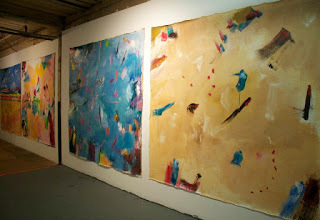

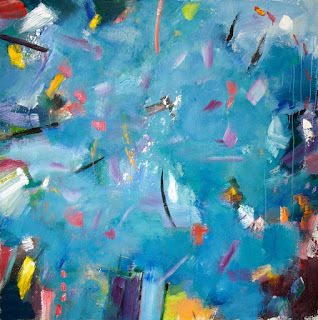
I know most of this blog is given over to other writers, but I really have an intense curiosity about every other kind of creativity. I wonder how the process in different media is different, what goes on in process, and how I might possibly learn from it myself, or at the very least, deepen my understanding of someone else's art. I've had filmmakers here, and a clothing designer, and now, my first painter!
I first came upon Richard Kattman's paintings while browsing through my FB feed. I had an immediate visceral reaction to the painting above, the blue one called West of the Ocean. I couldn't stop staring. My heart was pounding. I had a physical yearning for the painting. It wasn't just that I wanted the painting. I needed it. So I went to his page and began to look at his other paintings, and for many of them, I had the same strong reaction. This yearning! So I wrote to Richard and asked if I could interview him for my blog, and we started to have a conversation and realized we had similar life experiences--could that be why his paintings move me so? I'm thrilled he said yes to coming on here. His paintings are now at the Attleboro Arts Museum and he's also a prominent landscape architect. And, of course, he's becoming more and more known as a painter. Thanks so much, Richard, for agreeing to this pesty interview.
When I work, I’m not thinking about the reader or the media attention it might get (or not get). I’m just writing for myself because I feel that if I reach those deep dark places of emotion for me-it will also reach someone else. Do you do that as you paint, or are you aware of your audience?
Early on in my life as a painter, I decided to paint abstract paintings as a way of searching for something unknown, something on a higher level of thought or experience, outside the normal realm of experience, outside the sphere of my education and upbringing, beyond my capacities, to explore the realm of understanding, simply to go beyond anything familiar, yet stay in touch with myself, and reach out for what I knew not.
Painting became a way of expressing my love of nature, my happiness, love of beauty, my angst, my history, my wins and losses, and battles with demons. Painting allowed me to make a mark on the world, to claim the thumbprint of my existence.
All of this was done in a sort of rage in the studio, with no one to see the results. I had total confidence in my abilities and knew it was just a matter of time to master the craft. Harry Callahan, the photographer, told me that King Harvest would come! So I looked at thousands and thousands of images of artworks by Durer and DaVinci and Titian and Picasso and Matisse and Monet and Giacometti and of course Richter, the latest rage in the art world. I taught myself to draw from the figure and the landscape. I read many of the classics, especially Tolstoy. Then armed with cultural overload, I painted, and painted, and painted.
How do you go about doing a painting? Does it surprise you or are you in control?
Inspiration comes from many sources. With some artworks I start out painting with a vague idea of color combinations, say violet and gold or blue and peach, and make marks with umber black to add movement or structure. With other paintings, the curve and color of a breast is all that is required to set up resonance. A rose in the garden or the splash of surf on the rocks drives me to distraction.
So some works are planned, but most are not. The painting often takes shape as I work. Some works go up rapidly. I often feel like the White Rabbit, with little enough time to paint…so make the most of it and get things done quickly. Yet I step back and reflect, then attack the canvas again. The best works are often completed in a matter of days, others weeks or months. It is done when it is done.
In the beginning of a canvas I have little control and paint desperately, but a certain calm takes over and an image gradually emerges, both flawed and incomplete. Studying he canvas determines possible modifications but with each change the entire canvas changes, minor or major. Sometimes the entire work gets washed out and another work emerges from the struggle. Surprises and errors, an out of control feeling adds chaos to undermine order. Like life. Finally when adjustments will lessen or ruin the story, the painting is complete, and another idea surfaces.
What make you want to paint?
The urge to paint and draw is built in to my nature and there is no denying it. Forces in my arm dictate action, as does my wired brain. Any stimulus is means for creation. Artworks by artists that I have pondered get recycled and reappear in new contexts divorced from the original models set in the context of my way. Choice is not an option. I am driven to create constantly, reacting to personal circumstances, forging new inroads, experiencing the tragedy of a ruined landscape, or seeing the beauty of a pattern in the snow.
Can you talk about each (Landscape and Abstract Paintings)?
Abstract painting is my passion, though I live for plein air painting. Abstraction, using big brushes and a huge canvas allows me to travel uninhibited through space, time, and memory, to paint. Movement, energy, and force are primary considerations. Spatter, drips, thrust, marks from figure drawing, hand prints as proof of existence, memories, hopes, flowers, stars, the ocean currents, fields of color, frame edges, and all aspects of life come in to play. Abstraction demands a higher ideal and the risks are large as the soul is spilled out for all to see.
Landscape painting requires seeing, concentration, translation, drawing skills, color selections, and expression. Taking the time to actually see and paint a magic pond or local field or a lovely red house in Winter is an endeavor in itself, usually richly rewarding. With difficulties it can make an artist cry! Placing a pink sliver here or a slice of pale blue there on the canvas is most satisfying. The place is not forgotten and may bring great pleasure and joy.
Can you tell me what goes on in the planning of a painting for you?
The kernel of an idea formulates in my mind usually demanding immediate attention. Sketching out the idea or beginning straight away as Monet would, I put charcoal to canvas to lay out the design. Correcting the positions is key as is selecting and placing the colors. I change the colors or add a line. I meditate, then repeat the first verse add infinitum until finis.
What’s obsessing you now and why?
• Collecting old fashioned roses and minding the garden to stay in touch with the Earth• Keeping track of family to keep us together• Reading fine literature for the love of it• Looking at fine art books also for the love of it• Buying fine paints to use the best available materials• Planting trees to save the planet• Fine art painting to raise awareness of the environment• Attempting to fuse figure and abstraction for the hell of it• Keeping old and making new friends to feel alive• Searching for beauty for no reason• Enjoying life so no regrets
What question didn’t I ask that I should have?
RK: I do not know!?[image error]
Published on July 16, 2012 15:04
July 11, 2012
Win a copy of Lisa Cron's astonishing Wired for Story: Using Brain Science to Hook Readers From the Very First Sentence
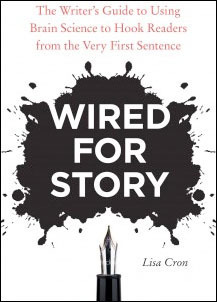
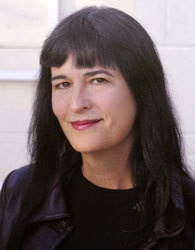
Struggling to write your novel? Feel like you can't get a grip of on your story. My friend, the brilliant story-structure guru, UCLA instructor, former agent and writer Lisa Cron's new book, Wired For Story: The Writers' Guide to Using Brain Science to Hook Readers From the Very First Sentence is a new way of looking at story, based on the science of how the brain works. Trust me, it works. I've made Lisa sit down with me and help me unlock two novels so far, and a script. You'll want to snap up this book, but she's offering to give away 4 copies. And all you have to do is comment here on what you think the biggest problem in telling a story well is. The first four responses get a book!
Don't forget, if you see you are one of the first four, get me your address at carleavitt@hotmail.com so we can send you a book![image error]
Published on July 11, 2012 07:42
July 10, 2012
Chris Bohjalian talks about The Sandcastle Girls, the Armenian genocide, why the biking season is so short, and so much more
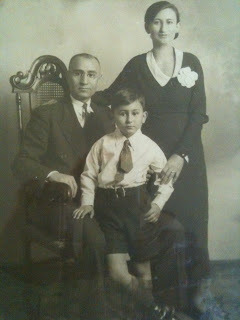
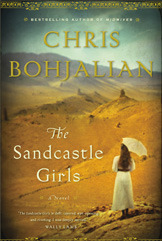
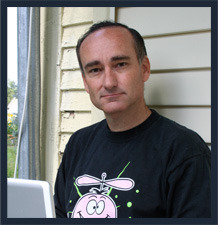
The truth is, I adore Chris Bohjalian. Not just because he writes such wonderful novels, but because you honestly have never met a funnier, kinder, more generous writer on the planet. He shared a stage with me at Rainy Day Books (How generous was that to share his huge audience with me? And you have to see him throw out t-shirts to audience members if they can answer correctly: Which book has more pages, his or War and Peace?), and despite his huge fame, he remains so down-to-earth, you could grab him for cupcakes and tea. His new novel, the Sandcastle Girls (out July 17th) is extraordinary. Of course it's beautifully written, but the subject matter, the near extermination of the Armenian people, is told in a way that is both deeply personal and monumentally moving. Raves Kirkus in a starred review, "An unforgettable exposition of the still too-little-known facts of the Armenian genocide and it's multigenerational consequences." Publisher's Weekly said, "His storytelling makes this a beautiful, frightening, and unforgettable read." And Library Journal urges, "Not to be missed. Simply astounding."
The photo above is of Chris and his parents, by the way.
I'm so thrilled to have Chris here. Thank you, thank you, Chris.
Critics are calling The Sandcastle Girls the most ambitious and personal novel of your career. What was so different about the writing of this book?
In 1915, there were roughly two million Armenians living in the Ottoman Empire. By the end of First World War, all but 500,000 would be dead: Either executed by Turkish gendarmes and soldiers, massacred by neighbors, or marched into the unforgiving Syrian desert to die slowly of dehydration, starvation, exhaustion, and dysentery.
My family's history parallels the slaughter all too perfectly. I had four Armenian great-grandparents alive in 1915: All but one would be killed.
On my cell phone I have some family photos, including the oldest family photo we have. It's a formal portrait with eight people in it, taken somewhere in or near Constantinople just before the turn of the last century. My grandfather, Leo Bohjalian, is a toddler sitting on his father's lap. And my aunt wrote about him on the back of the image, "Levon Nazareth Bohjalian, only family member to escape Turkey for Egypt."
I know in my heart that this is the most important novel I will ever write.
The novel says a lot about what it means to rediscover our heritage, and how the past is imprinted upon the present. Could you talk a little about that?
Okay, another story about another photo -- again, one I carry with me on my iPhone. It's my father as a five-year-old boy in 1933 or 1934, surrounded by his parents -- my grandparents. It was taken in Manhattan or a suburb of Manhattan. My father is wearing short pants and a white shirt with a tie. My grandmother is wearing a beautiful dark dress with a white collar and a corsage the size of a softball. My grandfather is wearing a suit. (Until he was a very, very old man, I never saw him in anything but a suit. As my aunt once said, laughing, sometimes he would be wearing only a vest or a white dress shirt when he was cleaning the oil burner or trimming the hedges.) In that photo I see wisps of the exotic house in a Westchester suburb in which my father was raised: The plush Oriental carpets, my grandmother's intricate Armenian lacework and doilies, and bookshelves packed with books in a language -- an alphabet -- I could not begin to decipher. My father didn't speak a word of English when he started kindergarten. But in my grandmother, I see my daughter. In that five-year-old boy, I see the man who raised me. My father was at the end of his life when I was writing this novel, and those sorts of photos were the ways we would pass the time when I would visit -- and how, finally, he would share with me bits and pieces of his childhood.
Why do you think the horrific genocide of 1915 (“The Slaughter You Know Next to Nothing About”) isn’t better known?
I think there are a variety of reasons: A principal one is that the post-War Ataturk Government wanted to be perceived as a modern, Western democracy. It didn't want to be saddled with the sort of barbarism that was involved with what Raphael Lemkin christened "genocide." And while news cycles moved more slowly in the 1920s than they do now, they did move.
And people's memories are short.
Moreover, there are two differences between the Armenian Genocide and the Holocaust.
First, the Holocaust occurred smack in the middle of Western Europe and the Ukraine. You can't murder six million people from the Seine to the Volga without a lot of witnesses. The Armenians were slaughtered in eastern Turkey and the Syrian desert. As my fictional narrator asks rhetorically in The Sandcastle Girls, "How do you kill a million and a half people with nobody knowing? You kill them in the middle of nowhere."
Second, there is the issue of recognition. A few years ago, I heard the incredibly inspiring Gerda Weissmann Klein speak at the University of Texas Hillel. Gerda is a Holocaust Survivor and the author of (among other books) All But My Life. Someone asked her, “What do you say to people who deny the Holocaust?"
She shrugged and said simply, “I tell them to ask Germany what happened. Germany doesn’t deny it."
As Armenians, we have a Genocide in which fully three-quarters of the Armenians living in the Ottoman Empire were killed and yet it remains unrecognized by Turkey and its allies.
I think that’s why we are hungry for novels that tell our story – and that tell the world what our ancestors endured a century ago.
I deeply admired the structure of the novel. Did you have this plan in mind when you started or did it evolve?
First of all, thank you.
Yes, I did have this plan in mind when I started the novel.
As an Armenian-American and the grandson of survivors, I knew this was going to be a deeply personal story – in some ways, the most personal story I had ever written. (When I was at the Genocide Memorial in Yerevan recently or standing before the bones from Der-el-Zor in the Genocide Chapel in Beirut, all I had to do was glance at the old family photos on my iPhone to know why this book mattered so much to me.)
Consequently, I decided to begin with family history – with a moment that would allow me to walk slowly from the light of the present into the shadows of the past. I created a female version of myself: An Armenian-American novelist at mid-life named Laura Petrosian, who has thought far too little about her ancestry and why she is who she is. Her childhood was, in some ways, a reflection of mine with merely the gender pronouns reversed. To wit, her first boyfriend in Miami, Florida was Turkish, just as my first girlfriend was. Now, her grandparents in the novel are not my grandparents, but I hope their fictional experiences are compelling drama and illuminate what my narrator christens “The Slaughter You Know Next to Nothing About.” The result is a book that moves back and forth in time, between Laura’s present and her grandparents’ past. The structure allows readers to catch their breath. Me, too. We can all escape for a little while from the searing desert sun; we can reflect on our own family histories; and, yes, we can watch a child – in this case, Laura – grow up in an atmosphere a far cry from the inferno of the Armenian Genocide..
The Sandcastle Girls is your 15th novel. You’re amazing prolific. So, When you start a book, do you ever worry, what if I can’t think of anything else to write about? (This is said very tongue in cheek.)
I always find things to worry about. Always. Now, thank you very much, I will add writer's block to the list! What’s obsessing you now? What question didn’t I ask that I should have?
What's obsessing me right now? Why is "Mad Men" only thirteen episodes? Why isn't the biking season longer in Vermont? When is Caroline Leavitt going to gift us with another wonderful novel?
Published on July 10, 2012 08:50
July 9, 2012
Amy Hill Hearth talks about Miss Dreamsville and the Collier County Women's Literary Society, writing, and finding an authentic voice.
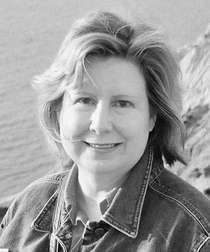
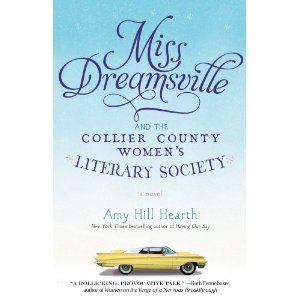
Amy Hill Hearth wrote the astonishing New York Times bestseller, Having Our Say: The Delany Sisters' First 100 Years. Her debut, Miss Dreamsville and The Collier County Women's Literary Society is about a bookclub set in a small, racially segregated town, and it's wonderful. I'm honored to have Amy here, writing about creativity. Thank you, thank you, Amy!
I never expected to write a novel. It wasn’t part of my plans. I was taking a break from my nonfiction book projects and the intense world of publishing. I remember telling my mom, “I’m going to write just for fun for a while.” And that’s what I did. I had never tried my hand at fiction, and I had no idea what I was doing. I began Miss Dreamsville and the Collier County Women’s Literary Society as a short story. The more I wrote, the more I loved my characters and plot, and I thought, Could this be a novel? I just kept on writing, telling no one (except my husband, although even he didn’t see a draft for months). I’ve always been the kind of writer who doesn’t talk about my work while it’s in process. I don’t want other writers’ thoughts and ideas intruding on my muse. And I believe that if you talk too much about your writing, it dilutes the energy that you can deliver to the page. In my experience, that’s true with nonfiction, and probably even more so with fiction. Your characters have to live in your own head.
Miss Dreamsvilleis inspired by a real person – my late mother-in-law. When her family moved from Boston to a town of 800 people in Collier County, Florida in 1962, she got into all sorts of trouble. I think she managed to offend just about everyone. Her experience became the springboard for the novel. Everything I learned as a journalist and narrative nonfiction author was useful when I tried fiction. Regardless of whether you’re writing fiction or nonfiction, you are telling a story. You need a dramatic arc, and you must make a million unique decisions regarding what to cut or what to add. Of course, the two are opposite when it comes to the rules of telling that story. In nonfiction you must stick to the facts. In fiction you get to make stuff up, which was very difficult for me until I realized it was just a matter of switching gears mentally.
But the main similarity, or so it seems to me, is that both fiction and nonfiction depend on finding an authentic voice. With nonfiction (especially oral histories, such as my first book, Having Our Say) it’s a matter of listening to someone until you hear their authentic voice. With fiction, it’s about listening to yourself to find your own authentic voice. As a child, I lived in the South and acquired the playfulness and love of language that is uniquely Southern, but I’d never had a chance to fully explore that voice. Writing a novel gave me that opportunity.
Ironically, considering that I was taking a break from publishing, Miss Dreamsville put me right back in the publishing
Published on July 09, 2012 17:56
Natalie Bakopoulos talks about The Green Shore, how politics become personal, and so much more
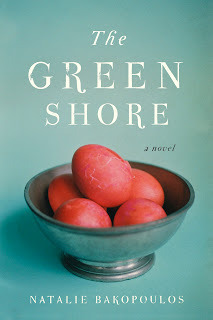
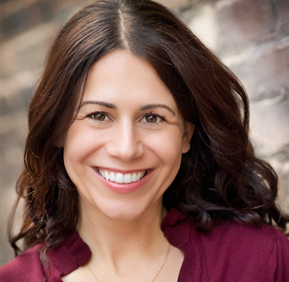
I first heard about Natalie Bakopoulos from her brother Dean, (I gave his first novel, Please Don't Come Back From The Moon, a rave in the Boston Globe.) From the first chapter of The Green Shore, a stunner about politics, passion and family, I could tell I was in the hands of a master, and I'm thrilled to have Natalie on my blog. A teacher at the University of Michigan, is also a contributing editor for Fiction Writers Review and every summer she teaches writing at the Aegean Arts Circle in Andros, Greece. She's received an O. Henry Award, a Hopwood Award, and a Platsis Prize for Work in the Greek Legacy. I'm thrilled and honored to have her here. Thank you so much, Natalie.
What made you want to write about the Greek military coup as a backdrop?
I wish I had a definite answer to this, could pinpoint the moment when I thought of this project. Sometimes I think your entire life goes into your first novel. But I have a few ideas. First, I wanted to write about Greece. I had fallen in love with the place when I was younger and it figured heavily in my imagination. But why a dictatorship? Well, for one, as Charles Baxter has noted, “Hell is story-friendly.”
After September 11 was when I really began to take writing seriously. I don’t mean to make a connection between the two things, but this seems to be about the time that I began to realize that I wanted to be a writer.I was living in Madison, Wisconsin, and went to listen to Bill Ayers give a reading at Canterbury Booksellers about his memoir Fugitive Days, about his experience with the activist group The Weather Underground. It was right after September 11, when it seemed so many people seemed completely okay with giving up basic civil liberties if this would keep them safe. This shocked me. Bill Ayers, if I remember correctly, noted that there had been a ‘coup’ in this country, and I was fascinated by this. A coup.
I began thinking of the way people behave when their principal emotion is fear. Around the same time, I began asking my father stories about growing up in Greece. He came to the States in 1966, one year before the Greek dictatorship began, and I started thinking about what was going on then in Greece, what would make him so anxious to leave.
Finally, I think because I didn’t grow up in the sixties---and was born in the seventies---I have always had a fascination with this period in general, and also perhaps the way we’ve romanticized it. Something that made its mark in the American collective memory but not in my individual one.
The novel really, to me, shows how the political becomes very deeply personal. Can you talk a bit about that?
I teach writing, and often students will comment on the fact that politics doesn’t influence their lives. I just about fly off the handle. We live in an era where the word “vagina” is a dirty word, for one, and where it seems that all the progress we’ve made in women’s rights is being threatened, things that in most other Western, democratic nations are not even issues.
But I digress. This is not what the book is about. The Green Shore is about a military dictatorship. I think when your public lives are censored and oppressive, your private life becomes the only thing you can control, the way you can rebel, is in your personal life. When people feel trapped, they react in interesting ways.
What's your writing life like? Do you and your brother, the writer Dean Bakopoulos, share pages?
Dean and I don’t generally share pages---we’re too close, and we have a lifetime of complexity and familiarity and history between us---but we do often discuss our work. Dean was writing long before I was, and he has always been hugely supportive of my work. Sometimes his Facebook news feed looks like The Natalie Show.
I love Dean’s writing, the depth of emotion, the longing, the wit and the political engagement of it. He’s a talented kid, that one. I hope we’ll write something together--- Maybe a television series.
My writing life? It mostly occurs in the early mornings. If I don’t put in those early hours, I generally sabotage the rest of the day. If nothing’s been written by 9 a.m. I think, Well, that’s that. But even if I get an hour or two in, I can return to it in the afternoon, or the evening.
What's obsessing you now and why?
Greece continues to obsess me. Not in the same way it did when I was writing the novel (though my current project is also set in Greece), but politically, economically. I can’t get enough news, enough analysis. And I read very slowly in Greek, so it’s a time-consuming obsession. It’s such an uncertain, bleak time there.The general state of political discourse in this country. The horrifying steps backwards in the politics of women’s health, the things that I thought we’ve already settled years ago are suddenly coming into question. What else? Lots of other things, too, but nothing I want to admit in a public forum.
What question didn't I ask that I should have?
What is The Green Shore?Well, Caroline, I’m so glad you asked. The title comes from the poem “Sleep” by the Greek poet Kostas Karyotakis. “Will the gift and good fortune be granted / to us that one night we can go to die / there on the green shore of our native land?”
When the coup happened, Greece was paralyzed by shock and by fear. Even though there had been rumors of a coup, the actual execution of one was another story entirely. The country that Greece had known had been snatched from within. I see “the green shore” as a representation of what was lost, what was longed for—and in the light of what is happening in Greece now, I think this idea is perhaps even more resonant.
It’s a place or state that exists but has disappeared, a longing for something that either never was completely or that has disappeared. To die on the green shore of your native land is to somehow reclaim that place. When I was in Greece this past May, a Greek filmmaker where I see The Green Shore---what images the title evokes for me. I found it a very interesting question, particularly because I think so much in words and so little in images. But for me, it’s Cape Sounion, the southernmost tip of Attica, where the ruins of Poseidon’s temple remain.
Published on July 09, 2012 17:45
July 5, 2012
The novelist as businesswoman: Susanne Dunlap talks about Appy Couple
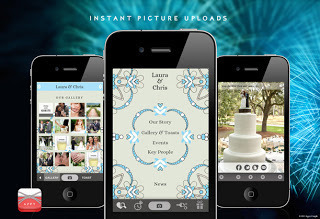
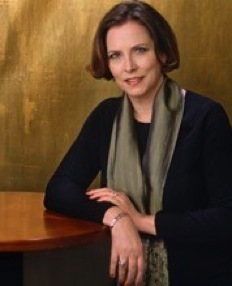
I've know author Susanne Dunlap ever since the halcyon days of Readerville.com. I love her historical novels, love her dog Betty, one of the few breeds that doesn't make me sneeze or wheeze, and I especially adore her. Only a lucky few novelists don't have to have other work to pay the bills, and Suzanne came up with an ingenious company, Appy Couple, that's doing fantastically well, and I wanted her to come on and talk about it here. Thank you, Susanne! (And give Betty a big hug for me.)
So tell us about your business?
Appy Couple is a platform that lets engaged couples create and publish their own mobile wedding app. It lets people share photos, give all the event information, take RSVPs and more. With Appy Couple, you create a mobile app and a wedding website at the same time. Anyone who is thinking of getting married or has gotten married recently knows what we’re talking about!
So how does a novelist become a business person? What was the transition like? Your company's been featured everywhere from The Wall Street Journal to the NYT--is it a different kind of fame than being a well-known novelist?
First of all, novelists ARE business people, whether we like it or not. Our novels are our products, which need to be packaged and promoted effectively in order to sell.
But for me, I’ve been in the business world since I graduated from college and went into advertising—as a copywriter! So I guess that begs the question of writer first, or business first.
Like the vast majority of novelists, I have never earned a real living from my books. I’ve either worked a full-time job at the same time, or tried to patch together enough freelance to keep a roof over my head. So it really wasn’t so much of a transition when my co-founder and I decided to create this business.
In fact, we were both working for another startup when the idea was hatched. We’d worked together on creating a very successful mobile app called WordWit, for a company named Ballpoint, Inc.
What I didn’t expect was how all-absorbing, totally encompassing, and night-and-day 7-days-a-week it would be. Frankly, we started it thinking it might be a cool and profitable business. We didn’t expect to become a part of the burgeoning tech startup community in NY, or graduate from the Entrepreneurs Roundtable Accelerator program, or have interest from VCs and other investors. We knew it was a great idea, and that we knew how to execute it well, but it has definitely taken off beyond our dreams.
As to fame—it’s the company that’s well known, not me. Sharmeen Mitha-Sehgal, the CEO and co-founder, is more the face of the company than I am, so she’s gotten a certain amount of notice. It’s very satisfying to see something we’ve worked so hard to create be out in the world and having people use and enjoy it.
In fact, launching a startup is very much like writing a book in that sense. It takes dedication, obsession, creativity, belief in what you’re doing, and the ability to persevere in the face of seemingly insurmountable obstacles.
And once you’re out there, you’re dealing with reviews. We have been fortunate to have great ones in the Wall Street Journal and the New York Times (my books have never been reviewed in either of those!), but the mobile app equivalent of Amazon reviews are App Store reviews. These have been mostly great too, but every once in a while someone gives us one star for a really crazy reason, like they couldn’t get ahold of an invitation code.
How do you balance writing your novels and running a business? Did anything about it surprise you?
Frankly, I haven’t written a word since I started this business. I even had a novel come out in April (The Academie), and have done little or nothing to promote it. There are not enough hours in the day, and I have no mental or emotional energy left for anything else. The startup is a 60 – 70-hour-a-week job, and I’m no spring chicken! I now know why kids just out of college are normally the ones who decide to do such a crazy thing…
The idea for AppyCouple.com is genius. Was this something you had always been thinking about or was it a flash of inspiration?
I can’t take all the credit for Appy Couple at all. Sharmeen had the basic idea, after she returned from a huge family wedding in India, where tons of money was spent but no one had the info they needed at their fingertips. We brainstormed the initial product together, and have pushed and prodded it into what it is now. We had to hire programmers to build out our vision, but Sharmeen is also the design genius behind everything.
I did, however, come up with the name, and have been closely involved in every step of the business. Now I turn my hand to anything from the marketing plan, to insurance, to customer support—even to a bit of coding, which I’ve learned by necessity.
What's obsessing you now and why?
Three things are obsessing me now: 1. How is Appy Couple going to continue to push forward and stay ahead of the encroaching competition; 2. Will our funding come through soon so we can hire the people we need; and 3. When will things quiet down enough for me to start writing again?
What question didn't I ask that I should have?
That’s easy! How can your readers get Appy Couple, if they happen to be engaged, or have friends and family who are engaged?
Right now, we’re in invitation-only beta. That means you need an invitation code in order to set up an account at AppyCouple.com and configure your app. We’ve created a limited number of codes for your readers: APPY4CL. You use it at appycouple.com, not in the app itself. You choose from our over 100 designs, and when you save it, you use the invitation code. After that, you’ll get a unique wedding code, which is how you log into your app and see how gorgeous it is!
Thanks for letting me talk about my latest creative project, even though it’s not a novel!
Published on July 05, 2012 09:07

